“What really does the code say about connecting premises wiring to supply lines? Where do I begin?”
These are common questions when one is planning the electric supply to a new building or structure.
You need to know where the utility wiring ends and where the premises wiring begins in order to start your design.
In order to do this, we first need to know that the Public Service Law, or its variation, in each state is the governing document from which the utility derives its authority to assert its electric service connection requirements to those who take electric service from the utility’s electric system. A state body such as a public service or utility commission (PSC or PUC) regulates the utilities under its state’s law. The utility is responsible for providing safe and adequate service in a just and reasonably charged manner. This is achieved through the utilities’ tariffs in the states and their published rules for electric service. Those rules and tariffs can determine the service point where utility wiring ends and premises wiring begins. The supplying utility provides their lines to the premise within the safe installation requirements of the public utility or public service commission’s rules; typically these follow the National Electrical Safety Code® (NESC®).
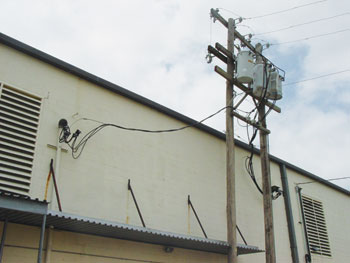
Photo 1
Once the service point has been established, you can find the requirements to safely install wiring on premises in the National Electrical Code. You can consider the NESC as the code applicable to the suppliers of electricity and the NEC as applicable to the users of electricity. To understand this demarcation of responsibilities, some understanding of key terms and the scopes of the NEC and NESC is needed.
InNEC-2008, Article 100 defines premise wiring (system) as that interior and exterior wiring … that extends from the service point of utility conductors … to the outlets(s). The NEC also definesservice as “the conductors and equipment for delivering electric energy from the serving utility to the wiring system of the premises served”; and, utilization equipment is that which “utilizes electric energy for electronic, electromechanical, chemical, heating, lighting, or similar purposes.”

Figure 1. Comparison of definitions of the term service point
The definition ofservice pointas presented in NEC-2008 and NESC-2007 are the same: “The point of connection between the facilities of the serving utility and the premises wiring” (see figure 1).
The service point is the key to understanding the demarcation of where each of these codes applies. For an overhead service,service dropis another term that is used by both codes but described differently in each code. The NEC states that “the overhead service conductors from the last pole or other aerial support to and including the splices, if any, connecting to the service-entrance conductors at the building or other structure” is a service drop. The service drop consists of overhead conductors provided by the governmental or regulated serving utility’s local requirements or those of a private utility under conditions of service (e.g., tariffs with service applications). As such, premises wiring attaches to a service drop at a service point.
The demarcation of responsibilities for each side of the service point needs a review of the scopes that are applicable to the NEC and to the NESC. It just happens that there is such a review in motion now by the committees of both codes. This results from the 2008 revision of the NEC where the words “or by other agreements” were removed from its scope. This provision is needed by utilities to make it clear that the NESC, not the NEC,covers certain installations on private property. This is a concern to utilities where their exclusively controlled facilities placed on private property would have to come under the NEC or always require an easement or right-of-way. So, an understanding of the scopes of both codes is necessary.
In 90.2(A) of NEC-2008, it states what is covered by the NEC.
- 90.2(A)(1) and (2) both indicate that installations within or on buildings or structures, in yards, parking lots, and other “premises” are covered.
- 90.2(A)(3) indicates that installations of conductors and equipment that connect to a supply of electricity are covered.
- 90.2(A)(4) indicates that “installations used by the electric utility, such as office buildings, warehouses, garages, machine shops and recreational buildings, that are not an integral part of a generating plant, substation, or control center” are covered.
So, it is clear that the NEC applies to premises wiring systems only.
Further inNEC-2008, 90.2(B) states what is not covered by the NEC.
• 90.2(B)(5) indicates installations under the exclusive control of electric utilities are not covered by the NEC as listed in subparts a, b, and c.Exclusive controlgenerally means control over the following: installation, ownership, operation, and maintenance.
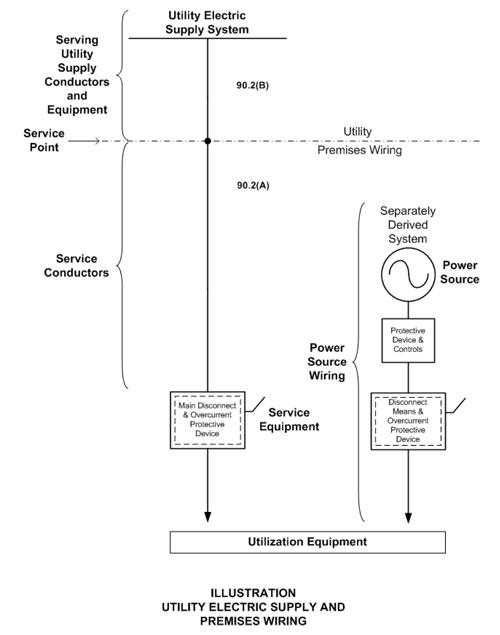
Figure 2. Utility electric supply and premises wiring
See figure 2 for what theNECcovers and does not cover in its scope for premises wiring connected to a utility electric supply.
The National Electrical Safety Code is applicable to supply systems and to equipment operated by electric, telephone and cable television utilities. The NESC covers basic provisions for safeguarding of persons from hazards arising from the installation, operation, and maintenance of electric supply stations and overhead and underground electric supply and communication lines.
The primary focus of the NESC is on protection of persons, not on protection of supply lines and equipment unless the failure of such equipment may be a hazard to persons. Thus, the NESC places great emphasis on electrical clearances, safe grounding practices, strength of materials and supporting structures, work rules, etc. The NESC as written is a legally adoptable code and is not a design manual.
Specifically, we note from NESC-2007 Rule 011 Scope:
• Rule 011.B: “The NESC covers utility facilities and functions up to the service point.” An informational note for this rule indicates that the NEC covers utilization wiring requirements beyond the service point.
• Rule 011.C: “NESC rules cover street and area lights (supplied by underground or overhead conductors) under the exclusive control of utilities (including their authorized contractors) or other qualified persons (such as those associated with an industrial complex).” An informational note for this rule indicates that luminaires not under such exclusive control are governed by the requirements of the NEC.
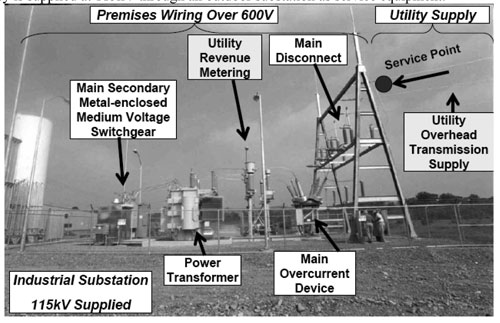
Figure 3. A supervised installation where an industry is supplied at 115 kV through an outdoor substation as service equipment
Regarding Rule 011.C, see figure 3 which shows a supervised installation where an industry is supplied at 115 kV through an outdoor substation as outdoor service equipment.
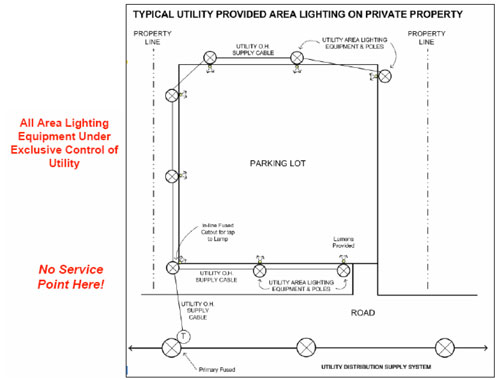
Figure 4. Typical utilitiy provided area lighting on private property, parking lot
A situation common to the understanding of what is covered is utility owned area and street lighting installations connected on the supply side of the service point. These are part of theutility distribution systemand are covered by the NESC, not by theNEC, since they are not utilization equipment and are not premises wiring. In contrast, any utilization equipment installations connected on the load side of the service point are part of thepremises wiring systemand are covered by theNEC. Figures 4 and 5 make this point.
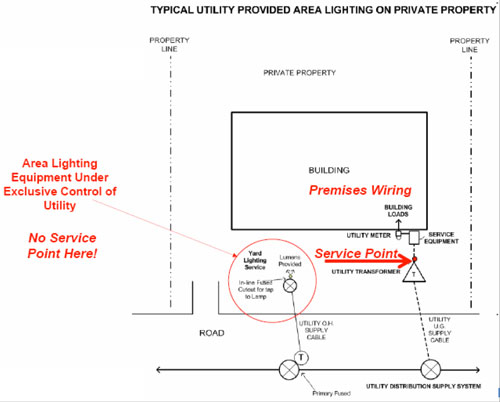
Figure 5. Typical utility provided area lighting on private property, building
Compliance to the NEC and NESC occurs through the adoption of installation standards by governing bodies. Adoption of electrical worker safety requirements (standard) is at the Federal level with the OSHA regulations of 29CFR1910 and 29CFR1926. However, adoption of installation standards (generally theNECas a basis) is done at the state level and sometimes at the local level. Most states adopt the National Electrical Code, National Electrical Safety Code, and other ANSI standards as the statewide codes and standards for regulatory authorities to use to assure safe and compatible electrical installations. See figure 6 as of February 2009.
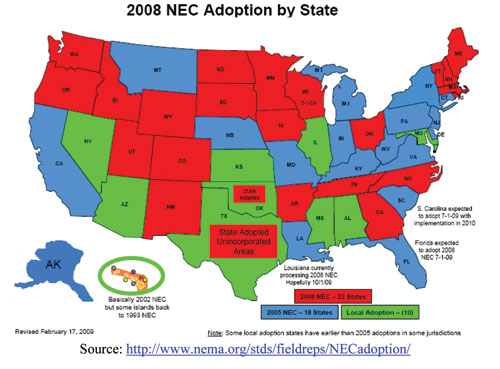
Figure 6. NEC-2008 adoption by state Source: http://www.nema.org/stds/fieldreps/NECadoption/
The local serving utility’s rules also apply where premises wiring is connected to supply lines, and the rules typically do not exceed the national installation standards except for local specific requirements. There are differences in the utility supply systems (voltages, capacities, type, etc.) and local options for utility supply systems and electrical installations (underground supply, overhead supply, reliability, interconnected generation, voltage regulation, life safety, seismic, etc.) that could require rules to address these issues that exceed theNEC. Most states have a technical review process by a state agency for these issues and rules, so there is a group of responsible individuals looking at the reasonableness of these requirements to deal with the technical issues for their locations and constituents. Most electric utilities publish their own specific rules and regulations for safe and compatible electrical installations for the users on their supply systems as part of their rate structure. These rules and regulations are publicly available, and most are also published on the utility’s web page.
What could these local rules be? Many states also give statutory authority by state law to the electric utility companies to set rules and regulations for customer’s wiring for accepting electric service. These laws enable the electric utility to act as an authority having jurisdiction (AHJ) for enforcing safety and compatible electrical installations as regulated by the PSC or PUC. But, the correct use of the termauthority having jurisdictionis often misunderstood. Most people believe there is only a single AHJ, and they believe that individual is the electrical inspector; this opinion is only partially correct. There may be several AHJs for an electrical project, each with a particular scope and limit to their authority.
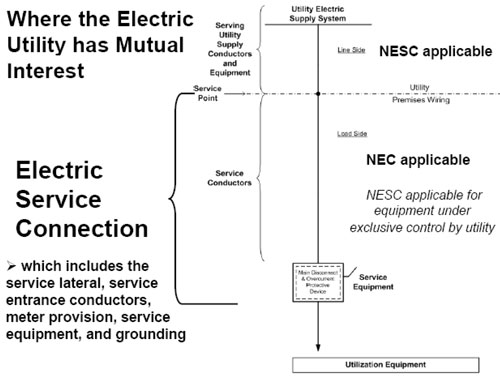
Figure 7. Where the electric utility has mutual interest
For the electrical project’s system to work properly, AHJs must coordinate their rules and requirements such that conflict is minimized. TheNECprovides a great amount of uniformity between electrical installations done in the United States. However, since states and local authorities adopt theNECand some additional rules, there are some installation requirements that are different from place to place.
Some basic key points for electric service requirements are common to all electric utility suppliers.
• No customer equipment is located on the utility’s system without some means of disconnect and main overcurrent protection, i.e., service equipment.
• Billing meters and associated wiring are always secure.
• Interface points with the customer are made as clear as possible to avoid potential operating and safety problems.
The electric service connection mutual to the utility and customer typically includes the service lateral, service-entrance conductors, meter provision, service equipment, and grounding. So, the utility electric service requirements are intended as a guide to provide a safe, efficient, economical and adequate interconnection to the utility’s electric system. These are not a complete set of requirements; certain additional site-specific requirements are commonly needed (see figure 7).
Electric utilities have been involved in the National Electrical Code since its inception in the interest of protecting persons and property from the hazards of using electricity. Although the utilities are covered by other standards such as the NESC for their installations, the utilities maintain a presence in the NEC to support the common interest for safe premises wiring rules for users of electricity. Utilities support the users’ interest as well to ensure premises wiring requirements are economical without compromising safety.
Edison Electric Institute (EEI) represents the investor-owned utility industry in a respected and valued manner by its Electric Light & Power NEC Task Force (EL&P) membership in the National Fire Protection Association and by participation in the Electrical Section (Committee). The EL&P NEC Task Force comprised of EEI member or affiliate electric utility industry representatives has been in existence since 1933 to continually provide utility representation on the NEC Code-Making Panels and Technical Correlating Committee (TCC). Their mission is to effectively represent the interests of the electric utilities, their users and their customers on the consensus based NFPA NEC Committee and its related electrical standards committees to provide practical safeguarding of persons and property from hazards arising from the use of electricity.
Likewise, EEI represents the investor-owned utility industry by its Electric Utility Representatives Coordinating (EURC) Task Force membership and by participation in the IEEE C2 National Electrical Safety Code main committee, subcommittees, and working groups. Their mission is to effectively represent the interests of the electric utilities and their customers on the consensus based NESC Committee to provide safeguarding of persons from hazards arising from the installation, operation, and maintenance of electric supply stations and overhead and underground electric supply and communication lines.
An ad hoc group of members from both committees of theNECand NESC has been working with the scope issues and recognize that education is key for all interests involved. Edison Electric Institute is an active participant in the ad hoc group and has submitted proposals to both codes. These proposals are in the process of a public comment period and comments from any and all concerned parties are invited and needed.
The EL&P and EURC task forces within the Edison Electric Institute can provide the resource needed to evaluate matters of the electric investor-owned utility industry relative to the installations of premises wiring connected to supply lines. Our identified EEI representatives are listed in the committee pages in the beginning of theNECand NESC books. If you have a question on this topic, please contact a committee member or the author of this article.











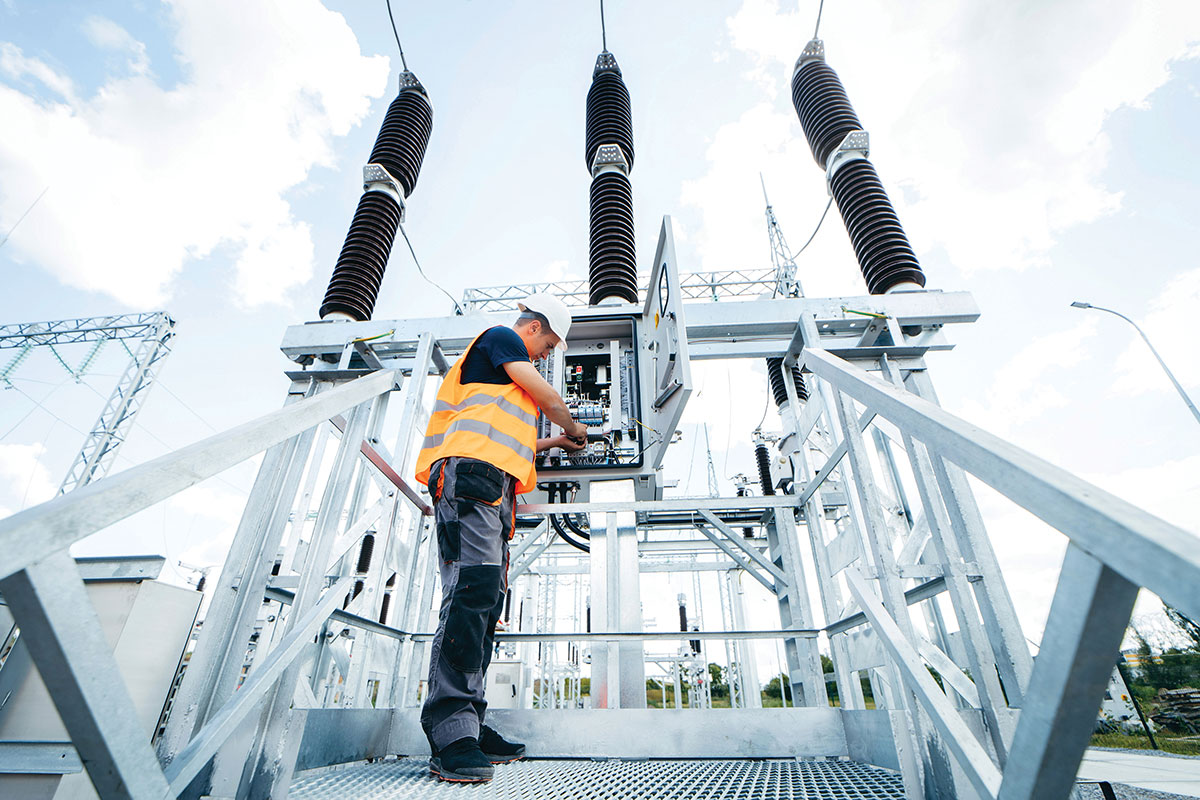


Find Us on Socials